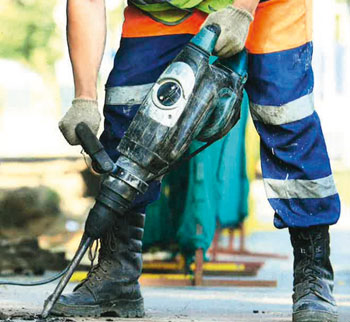This past 28 June, CTC, the worldwide leader in quality assurance and social responsibility for businesses operating in the leather, footwear, and leather goods industries, held a conference dedicated to the new PPE (personal protective equipment) Regulation (EU) 2016/425, which replaces the previous directive 89/686/EEC. Around ninety producers and distributors of protective gloves, safety footwear and apparel, equipment for motorcyclists, etc. participated in the conference, closely following the presentation given by Lionel Gaudillière, Certification Manager of the centre, who focused on the main changes introduced by the new regulation, and especially those concerning the placement of PPE on the European market.
 The most important changes regard aspects like the harmonisation of procedures of product assessment (CE marking) and market surveillance, and the activation of more precise regulations for the introduction of PPE into the European market. Even the decision to propose a regulation instead of a directive is important, because it avoids the adaptation of this into a national law, with the relative risk of different interpretations by various Member States.
The most important changes regard aspects like the harmonisation of procedures of product assessment (CE marking) and market surveillance, and the activation of more precise regulations for the introduction of PPE into the European market. Even the decision to propose a regulation instead of a directive is important, because it avoids the adaptation of this into a national law, with the relative risk of different interpretations by various Member States.
Here, one by one, are the changes associated with the new regulation:
- PPE categories: PPE for private use against heat, including products like oven and barbeque gloves and containers are fully considered PPE and should be assessed before being placed on the market. Protective equipment against cuts from handheld chainsaws moves from Category II to Category III against “fatal or irreversible risks” and therefore must be covered by an EU-type examination certificate and annual inspection.
- Economic operators and their obligations: established for manufacturers, authorised representatives, importers, or distributors. Concepts like “making available” or “placing on the market” are defined in a way that allows for the harmonisation of market surveillance regulations. Moreover, it establishes that an economic operator who either places PPE on the market under his own name or trademark becomes for all intents and purposes a manufacturer, who should assume the obligations of the manufacturer.
- Traceability and surveillance: manufacturers must indicate their own addresses on the markings of the regulation, so that market surveillance authorities can correctly identify it. The rules of surveillance have also been redefined, in order to harmonise the procedures of Member States for the inspection of PPE present on the market and prevent any distortion of competition between economic operators. The cooperation between Member States increases thanks to the establishment of surveillance committees on non-conforming rules and procedures and safeguard clauses.
- Product conformity: the concept of batch (or serial numbers) becomes fundamental for tracing the entry of PPE into the EU. These lot numbers must be indicated on the product and must be covered by a specific EU declaration of conformity, so that they can be associated with a specific lot of PPE under inspection or already placed on the market.
- Assessment procedures by a notified body: articles 10, 11A and 11B of the old directive have been substituted by modules B and C2 in order to align the PPE regulation with other regulations already applied to other CE marked products, like medical devices, equipment for measuring pressure, etc…. The regulations are also harmonised with a definition of the minimum contents to be used in technical documentation, EU-type examination certificates, and declarations of conformity.
- Timelines: all PPE placed on the market after 21 April 2019 must be covered by an EU certificate complying with the regulation. This leaves a window of just two years for notified bodies to prepare for the new regulation and for manufacturers to certify all the PPE to be placed on the market after 21 April 2019: although the bodies can issue EU-type examination certificates ahead of time, starting from 21 April 2018, this timeframe risks overloading the notified bodies with an influx of applications, while also stressing manufacturers… the certificates issued in compliance with the directive for PPE already on the market will instead remain valid until 21 April 2023.
- Validity EU-type examination certificates: valid for 5 years and renewable for another 5 years with simplified procedure, as long as there have not been changes to the standard and/or product.
The criteria for transferring certificates from the directive to the regulation has not yet been validated on a European level… Even if these transfers can be done ahead of time by notified bodies for the new regulation, a European document of coordination is still under evaluation.
In the meantime, CTC has begun the process of accreditation with the French body COFRAC and has submitted its own administrative documentation. An agreement has been made with the Ministry of Labour and Industrial Relations that all French entities will receive the list of notified bodies just as soon as they have received the green light from COFRAC. This will allow EU-type examination certifications to be issued in compliance with the 2016/425/EU regulation.



